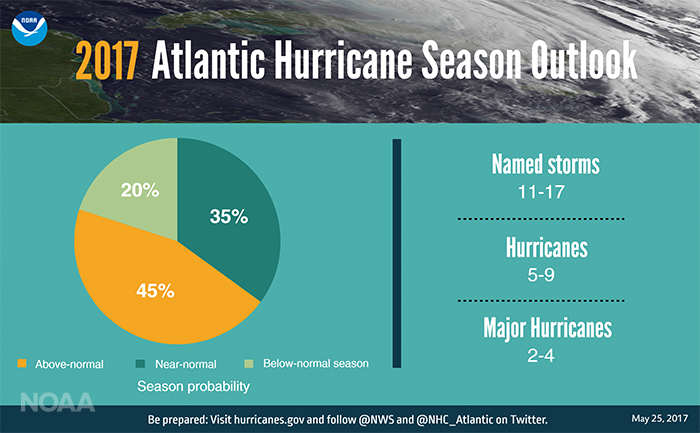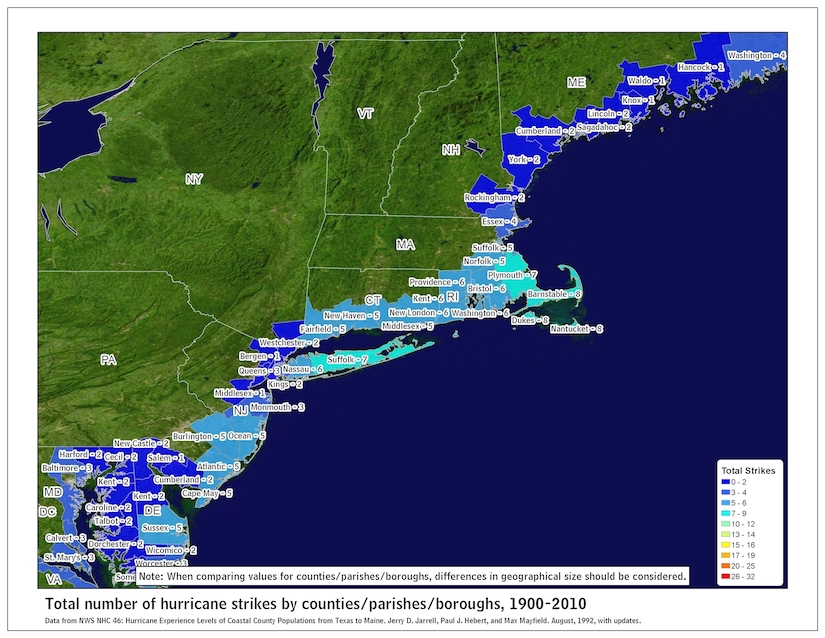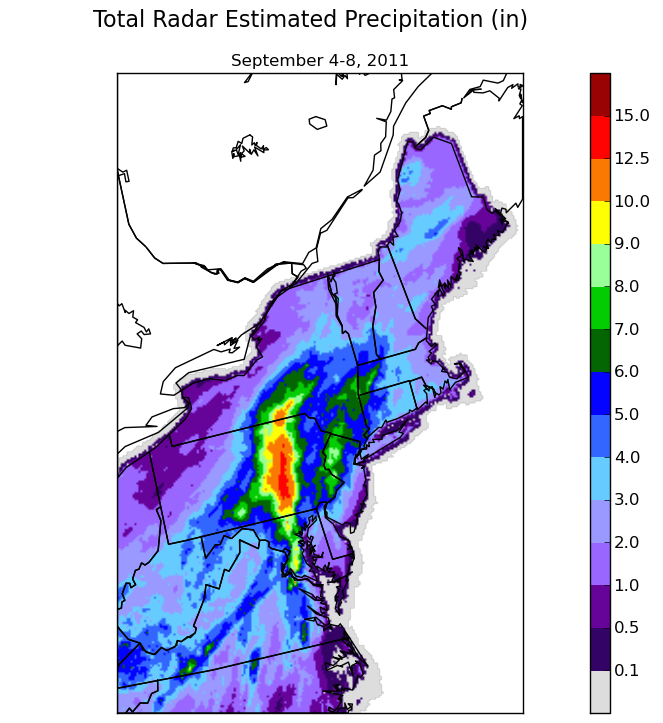One Week Until Hurricane Season
The 2017 Atlantic hurricane outlook from NOAA indicates there’s a 45% chance that this season will be more active than normal.
An above-normal Atlantic hurricane season is most likely, with the outlook calling for “a 70% likelihood of 11 to 17 named storms (winds of 39 mph or higher), of which 5 to 9 could become hurricanes (winds of 74 mph or higher), including 2 to 4 major hurricanes (Category 3, 4 or 5; winds of 111 mph or higher).”
The Atlantic hurricane season runs from June 1 through November 30, with a peak from mid-August to late October. However, there has already been a tropical system this year (which was accounted for in the forecast). Tropical Storm Arlene formed in April. The system was short-lived and did not impact land, but according to the National Hurricane Center, it was only the second tropical storm in April since satellite data began.
The 2017 Atlantic hurricane season forecast compared to an average season.
Between 1900 and 2010 almost every coastal county in the Northeast has been struck by a hurricane at least once. Click to enlarge.
Direct strikes, tropical systems passing nearby, and storm remnants all have the potential to impact the Northeast. Storm surge, which is the rise in sea level caused by the storm’s winds, is the leading cause of hurricane-related deaths. Sandy’s surge arrived near high tide, setting record-high water levels and causing devastating flooding.
Rainfall from tropical systems can also produce flooding, even inland. Such was the case in 2011 with Hurricane Irene and Tropical Storm Lee. Conditions were already wet prior to the arrival of these systems. The ground could not absorb the additional rainfall, so it ran into rivers and streams, causing major flooding. Other hazards from tropical systems include hurricane-force winds, tornadoes, large waves, and rip currents. It’s best to prepare prior to a storm’s arrival. For more information, go to the National Weather Service’s hurricane page: http://www.nws.noaa.gov/om/hurricane. An updated outlook will be issued by NOAA in August.
The remnants of Tropical Storm Lee dropped up to 15 inches of rain on parts of the Northeast.




